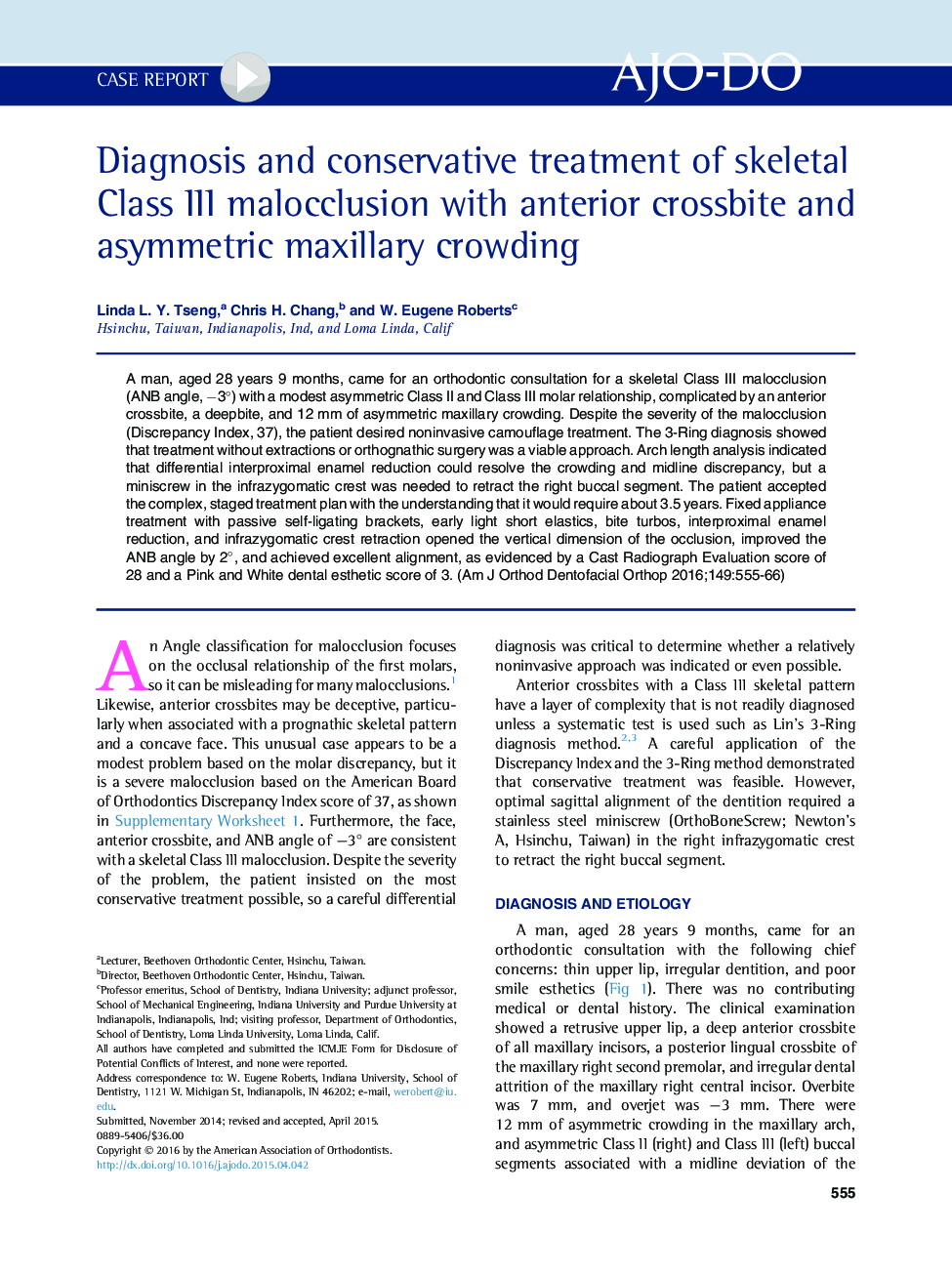| Article ID | Journal | Published Year | Pages | File Type |
|---|---|---|---|---|
| 3115487 | American Journal of Orthodontics and Dentofacial Orthopedics | 2016 | 12 Pages |
•Differential diagnosis was made with Discrepancy Index, 3-Ring, and Extraction Decision Table.•Conservative treatment was feasible.•Passive self-ligating brackets produced optimal results without excessive arch expansion or incisal flaring.•Crossbite and deepbite were corrected with bite turbos and early light Class III elastics.
A man, aged 28 years 9 months, came for an orthodontic consultation for a skeletal Class III malocclusion (ANB angle, −3°) with a modest asymmetric Class II and Class III molar relationship, complicated by an anterior crossbite, a deepbite, and 12 mm of asymmetric maxillary crowding. Despite the severity of the malocclusion (Discrepancy Index, 37), the patient desired noninvasive camouflage treatment. The 3-Ring diagnosis showed that treatment without extractions or orthognathic surgery was a viable approach. Arch length analysis indicated that differential interproximal enamel reduction could resolve the crowding and midline discrepancy, but a miniscrew in the infrazygomatic crest was needed to retract the right buccal segment. The patient accepted the complex, staged treatment plan with the understanding that it would require about 3.5 years. Fixed appliance treatment with passive self-ligating brackets, early light short elastics, bite turbos, interproximal enamel reduction, and infrazygomatic crest retraction opened the vertical dimension of the occlusion, improved the ANB angle by 2°, and achieved excellent alignment, as evidenced by a Cast Radiograph Evaluation score of 28 and a Pink and White dental esthetic score of 3.
